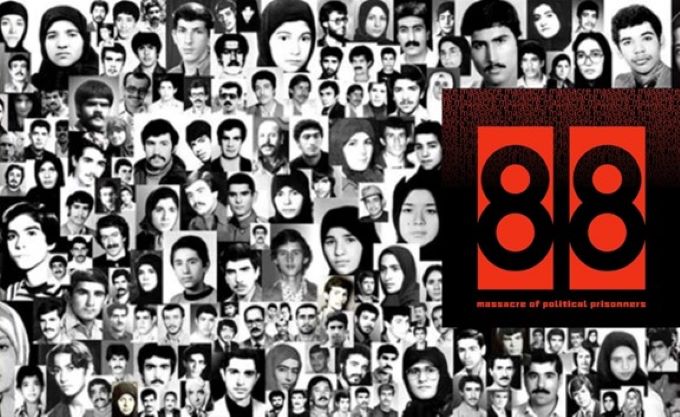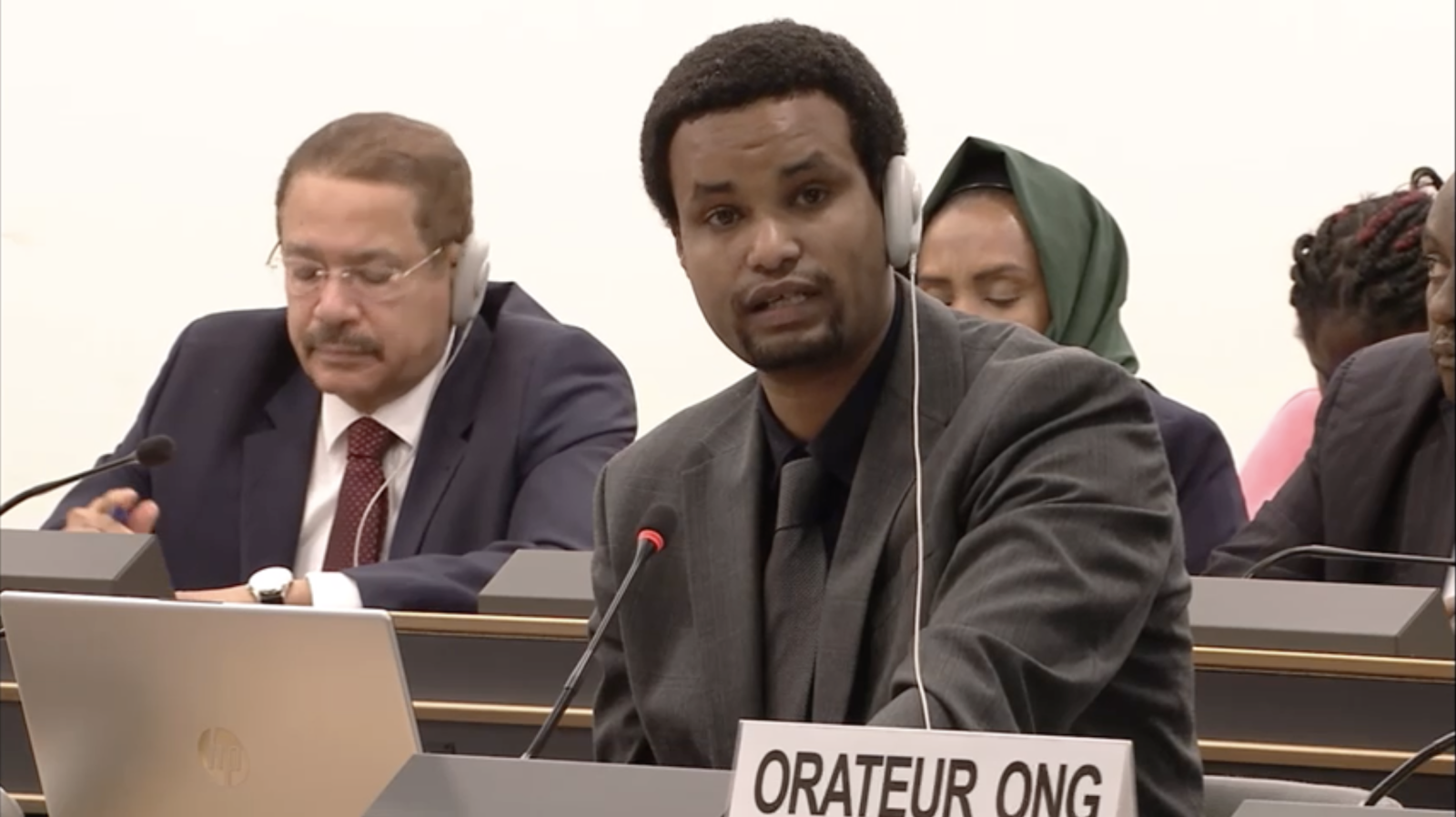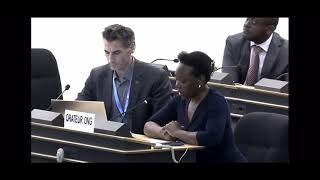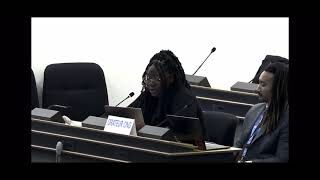
On 15 February, 2024, JVMI (Justice for the Victims of the 1988 Massacre in Iran) held a civil society hearing and provided a critical retrospective on the haunting legacy of the 1988 extrajudicial executions and enforced disappearances in Iran. Originating from a decree by Supreme Leader Khomeini, the 'Death Commissions' orchestrated mass executions of political prisoners who stood firm in their beliefs, relegating them to secret mass graves. Despite implicating figures like now President Ebrahim Raisi (then Deputy Prosecutor General), accountability has remained elusive. Raisi's presidency witnessed a disturbing escalation in the state's repression of protesters advocating for fundamental freedoms, with recent executions underscoring the urgency of the matter. The conference, spanning a single day, featured survivors of the 1988 massacre, victims' relatives, and distinguished international experts, engaging in profound discussions across four panels. The central theme revolved around the exploration of the severe repercussions of impunity for crimes against humanity and the imperative pursuit of justice for the victims.
Shortly after the end of the Iran-Iraq war, in July of 1988, Ayatollah Ruhollah Khomeini, Iran’s then supreme leader, issued a fatwa advocating for the execution of individuals associated with the Mojahedin (Monafeqin as called by the government, in English hypocrites) group. The letter emphasises that the Mojahedin are considered traitors who do not believe in Islam, engage in deception and hypocrisy, collaborate with external enemies (specifically mentioning the Baathist Party of Iraq and the World Arrogance), and are accused of moharebeh (waging war against God).
Khomeini’s letter instructs the implementation of the execution decree, specifying individuals and institutions responsible for carrying it out in Tehran and provinces. It emphasises the need for a unanimous or majority decision by designated authorities, urging a decisive approach without showing mercy to those perceived as enemies of God. The tone of the letter is harsh, calling for revolutionary rage and vengeance against the enemies of Islam, emphasising that hesitation or doubt in judicial matters is equivalent to ignoring the sacrifices of martyrs.[1] Although the fatwa issued by Ayatollah Khomeini was undated and not made public, circumstantial evidence indicates that it was issued on Thursday, July 28, the day before the Mojahedin’s National Liberation Army (NLA) forces agreed to withdraw from Iranian territory.[2]
It’s important to mention that the constitution of Iran's clerical regime includes a disturbing provision that if a virgin girl is executed, she will go to heaven. In order to prevent this, the night before the execution, these girls are subjected to rape by torturers. Shockingly, the day after the execution, either the torturer or a member of the firing squad approaches the victim's family with a box of sweets, congratulating them on their daughter's supposed marriage to her torturer before the execution. This gruesome and inhuman practice was exposed by former high-ranking officials within the regime in November 2009, revealing that it was a systematic procedure in jails. Between 1981 and 1986, more than 120,000 political prisoners fell victim to this method of execution. Disturbingly, despite the passage of time, the same pattern of aggression and crime persists.
In November 1988, Iran linked the event (mass executions) to battlefield casualties. A representative at the United Nations Peacekeeping (UNP) from Iran emphatically denied any mass killings within the country, presenting a list of over 1000 victims by name. Astonishingly, 140 of these victims were dismissed by the government as non-existent, claiming they were residing in Iraq, leading normal lives. Families who had lost loved ones were interviewed, revealing a stark contrast to the blanket denial exhibited by the Iranian government. By the end of 1989, reports of mass executions and mass graves were conspicuously absent, a trend that continued until 2016 when a Special Rapporteur submitted a limited subsection.
The focus then shifted to enforced disappearances and executions. In 2019, a group of UN experts and a Special Rapporteur urged the government to report on victims and safeguard the families seeking justice. Allegations expanded to include previously undisclosed detailed information, suggesting that these disappearances could potentially lead to crimes against humanity.
Amid the recent escalation in execution rates in Iran, the panel emphasised that the call for universal jurisdiction became imperative. All bodies were urged to delve into researching universal jurisdiction, a plea echoed by Amnesty during the 2022 protests sparked by rapes, harassment, and persecution of those killed and their families. Amnesty's reports highlighted the destruction of graves, rampant unemployment, and more, underscoring the repetitive nature of history. Advocating for a long-term investigative body, Amnesty emphasised the need for preserving evidence to facilitate further research and universal jurisdiction.
During the third part of the hearing, five witnesses, Reza Shemirani, Mehri Omrani, Hossein Farsi, Ahmad Ebrahimi, and Ali Zolfaqari presented their testimonies and what happened in Iran’s prisons in the years of 1981, 1982 and the massacre of 1988.
The collected testimonies offer a harrowing glimpse into the brutal experiences endured by Iranian prisoners during a period of political upheaval, with a focus on the events of 1988. Reza Shemirani's account details his confinement from 1981 to 1991, including time in Gohar Dasht. He reveals the emotional toll of solitary confinement, attempts at suicide, and the grim reality of mass executions. The prevalence of blanket denials by the Iranian government adds to the anguish of families searching for loved ones. Another witness, a Vakil Abad Mashhad prisoner, narrates her eight-year imprisonment, emphasizing the torture she witnessed and endured. The disturbing scenes include an elderly man covered in plastic, a mother and child subjected to torment, and the heightened security leading up to the ominous events of July 28, 1988.
Hossein Farsi’s testimony adds a decade-long perspective, spanning Rasht, Gohar Dasht, and Evin. The witness recounts the shocking experiences in 1988, highlighting the nationwide scope of the atrocities orchestrated by Khomeini. The exile from Rasht to Gohar Dasht in 1983 and the subsequent return of 30 prisoners to Rasht underscore the systemic nature of the executions. The aftermath reveals a tragic reality—released individuals re-arrested, families left in the dark, and executed prisoners unaccounted for. The narrator's post-release search for those missing amplifies the pervasive sense of loss.
Ahmad Ebrahimi’s testimony, spanning 13 years in Rasht, Gohar Dasht, and Evin, brings attention to the specific events of 1988 in Gohar Dasht. Two years in the committee, three in the corridor, and the witness recounts the widespread executions orchestrated by Khomeini. The narrative vividly describes the chilling scenes in Gohar Dasht in 1988, with prisoners witnessing executions out of windows and the disturbing activities in the death corridor. The witness details the ominous arrival of prison guards, including one with a wheelbarrow filled with gold, and the haunting sounds of bodies being thrown into vans. The narrator's personal tragedy, involving a brother-in-law's execution and the absence of a grave, adds a poignant touch to the overall narrative.
Collectively, these testimonies paint a grim picture of the systematic and widespread human rights abuses, including torture, mass executions, and enforced disappearances. The witnesses' accounts serve as powerful reminders of the enduring trauma faced by individuals and their families during this tumultuous period in Iran's history.
The concluding panel of the event focused on devising strategies to hold Iranian officials, notably President Ebrahim Raisi, accountable for crimes committed 35 years ago and persisting to this day. The panel, featuring Karen Smith (Special Representative of the Secretary-General for Children and Armed Conflict), Tahar Boumedra (Former chief of the Human Rights Office of the United Nations Assistance Mission for Iraq (UNAMI) and legal expert), Kevin Heller (currently Professor of International Law And Security at the University of Copenhagen’s Centre for Military Studies), and Wolfgang Schomburg (the first German Judge at the International Criminal Tribunal for the former Yugoslavia and the International Criminal Tribunal for Rwanda. From 1995 until 2000 he was a judge at the Federal Court of Justice in Karlsruhe), delved into the pivotal issue of securing accountability for Iranian officials implicated in crimes against humanity, with a particular emphasis on the atrocities of 1988. Kevin Heller, offering a legal perspective, meticulously outlined seven fundamental crimes, encompassing murder, extermination, imprisonment, torture, persecution, enforced disappearance, and acts causing physical or mental harm. Heller highlighted the challenging aspect of ICC involvement due to the passage of time, proposing that individual states, such as Sweden, take the initiative in pursuing prosecutions. Endorsing Amnesty International's call for an international investigation akin to those for Syria and Myanmar, Heller alluded to the potential involvement of the ICJ, considering Iran's ratification of the Genocide Convention.
Karen Smith expanded the discourse, underscoring the ongoing crimes against humanity and the heightened risk posed by the absence of accountability. Emphasising the responsibility of states, especially in preventing atrocity crimes, Smith referenced Iran's acknowledgment of this responsibility in the 2005 World Summit. Smith emphasised the imperative need for an expanded mandate by the HRC to independently address events like those in 1988. Symbolic gestures, such as ICC warrants and restrictions on officials' freedom of movement, were highlighted as means to convey international awareness and foster accountability. Stressing the significance of UN-sanctioned investigations and the inadequacy of relying solely on criminal justice, Smith provided a comprehensive overview of the multifaceted challenges.
Wolfgang Schomburg reflected on the potential impact of international intervention in 1988, speculating on its potential to prevent the continuation of crimes and recent incidents against women. Advocating for a specialised international court dedicated to crimes committed by Iranian state actors since 1981, Schomburg underscored the latent potential for justice even at this late stage, drawing parallels with successful models in Cambodia and Kosovo. The panel's culmination featured a collective call to establish a specialised court, emphasising the pivotal role of accountability in attaining justice and peace. In essence, the panellists advocated for a comprehensive approach, encompassing legal avenues, symbolic gestures, and the establishment of a specialised court to address the longstanding crimes committed by Iranian officials.
Tahar Boumedra, director of JVMI and former Chief of the UN Human Rights Office in Iraq and advisor to the Special Representative of the UN Secretary General (SRSG) in Iraq, recounted his introduction to the Mujahedin while working for the UN in Iraq. Originally from Algeria, he emphasised cultural affinity with the residents of Camp Ashraf and explained his UN mission under Security Council Resolution Chapter 7, focused on assisting Iraq. To maintain impartiality, he referred to them as "residents of the camp" rather than Mujahedin, working towards human rights promotion. Boumedra revealed UNAMI's policy prioritising Iraqi government interests over human rights, prompting him to act as a whistleblower, exposing extrajudicial killings in 2009, 2011, 2012, and later in Albania. He linked the atrocities to Ayatollah Khomeini's ongoing fatwa, explaining its influence and the difficulties in holding the Iranian regime accountable due to their refusal to cooperate. Despite challenges, JVMI pursued justice through avenues like the International Criminal Court and universal jurisdiction, citing a successful case against Hamid Nouri through the Swedish court, highlighting the importance of diplomatic interests over human rights for countries. The urgent need to document crimes from 1988 onwards was underscored for effective universal jurisdiction against Ebrahimi Raisi and other officials involved in the massacre.
Geneva International Centre for Justice (GICJ) welcomes and underscores the critical need for the expansion of the Fact-Finding Mission on Iran, coupled with the establishment of a tribunal. Justice must not only be pursued for the thousands of undocumented victims of these unfounded killings but also for the families of the executed. The multitude of testimonies and evidence presented attests to the persistent surveillance imposed by security forces over the past 36 years. This initiative stands as an imperative measure to hold Iranian officials accountable for crimes committed, extending beyond their own citizens to encompass individuals with diverse affiliations, including support for terrorist groups and proxies in the region. The repercussions of such actions have left both the citizens within Iran and those residing outside its borders vulnerable to a heightened state of insecurity.
[1] It is important to note that this text reflects a particular perspective and does not provide a broader context. The interpretation of the content may vary depending on the reader’s background and views.
[2] In 2001, Ayatollah Montezari reported that the fatwa was written on a Thursday after the incursion by the NLA but before he sent a letter to Ayatollah Khomeini objecting to the commissions on July 31. See Montazeri’s Memoirs, supra note 4, at 301. The only Thursday between those two events was July 28.







